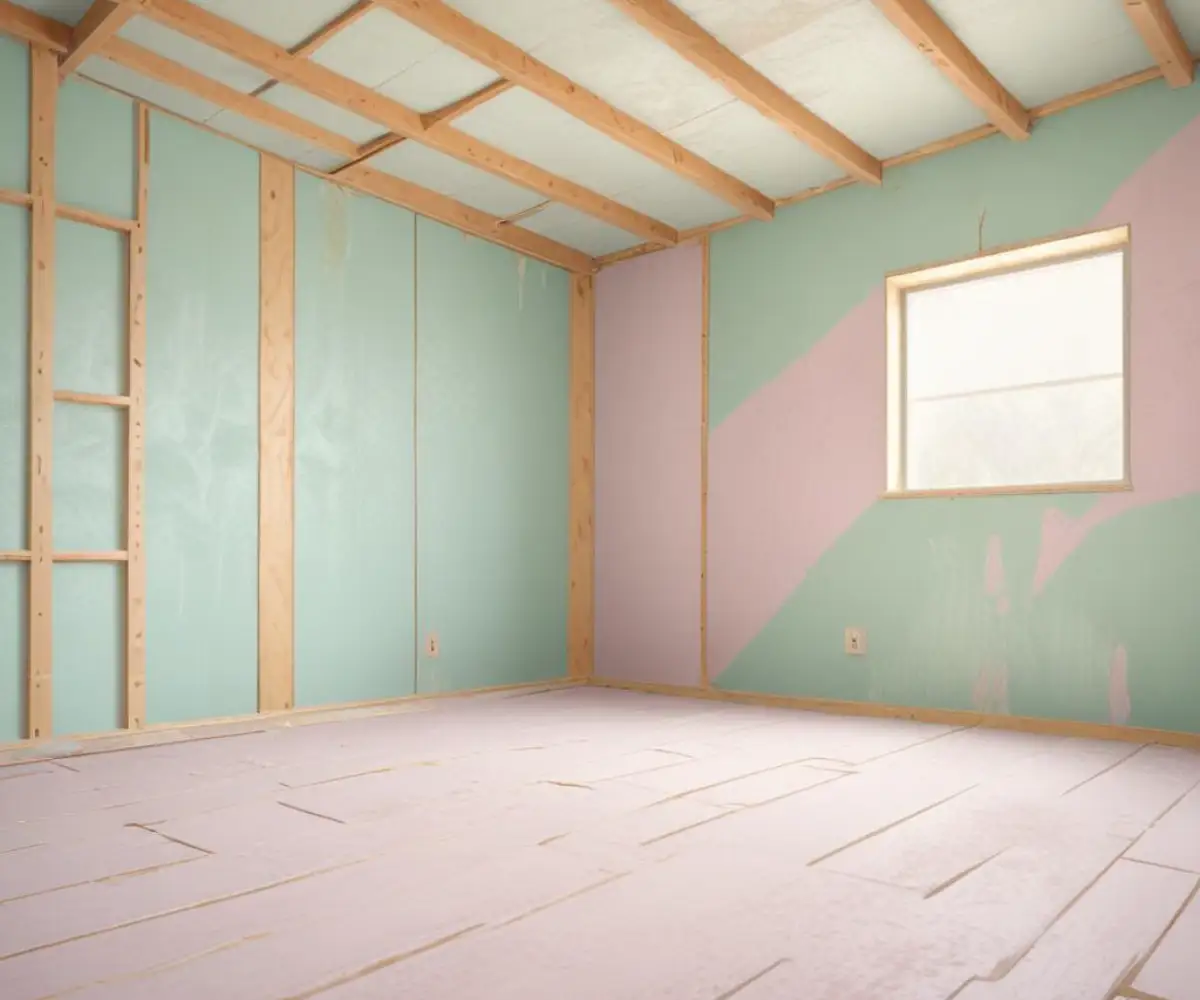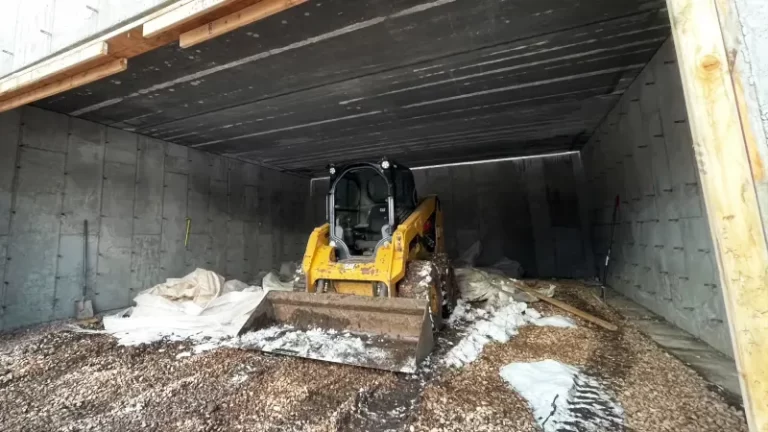Spray Foam Rim Joist Cost: The #1 Price Guide You Can’t Ignore
You feel it every winter: icy floors that chill you to the bone. You crank up the thermostat, but your energy bills just keep climbing, and a stubborn draft still snakes its way through your living space. This frustrating and expensive problem often originates from a single, overlooked area of your home: the uninsulated rim joist.
Rim joists, the wooden frame that sits atop your foundation, are a notorious source of energy loss. Sealing and insulating this critical area is one of the most effective upgrades you can make, and spray foam is widely considered the premium solution. But what is the real spray foam rim joist cost, and is it truly worth the investment?
You'll Learn About
What Are Rim Joists and Why Are They a Problem?
The rim joist, also called a band joist, is the perimeter of the floor framing system that caps off the floor joists. It’s essentially a thin barrier of wood separating your conditioned living space from the raw, unconditioned outside air. This direct connection creates a thermal bridge, allowing heat to escape effortlessly in the winter and pour in during the summer.
Uninsulated rim joists are more than just an energy issue. They are prime locations for air leaks, which invite moisture into your basement or crawlspace. This moisture can lead to condensation, mold growth, wood rot, and can even attract pests, creating a host of potential health and structural problems for your home.
Spray Foam Insulation: The Gold Standard Solution
While options like fiberglass batts or rigid foam boards can be used, spray polyurethane foam (SPF) offers a superior, all-in-one solution. It expands upon application to fill every crack and crevice, creating a powerful, seamless barrier that both insulates and air-seals in a single step. This is something other insulation types simply cannot do as effectively.
There are two primary types of spray foam to consider for this job:
Open-Cell Spray Foam: This foam is less dense and has a lower R-value (around R-3.5 per inch). While it’s an excellent air barrier and provides some sound-dampening, it is permeable to moisture.
Closed-Cell Spray Foam: This is a denser, more rigid foam with a much higher R-value (up to R-7 per inch). Crucially, it acts as an air, moisture, and vapor barrier, making it the ideal choice for rim joists where moisture control is paramount.
The Big Question: What is the Spray Foam Rim Joist Cost?
The cost to insulate your rim joists with spray foam is not a simple, one-size-fits-all number. For a typical home, professional installation can range from $1,300 to over $3,000. This price is influenced by numerous factors, but it often breaks down to a cost per linear foot.
Professionally installed closed-cell spray foam, the recommended type for this application, generally costs between $2.00 and $4.50 per linear foot. DIY kits appear cheaper on the surface, but come with their own set of challenges and hidden costs. Here’s a detailed comparison to help you understand the potential expenses.

Key Factors That Influence Your Final Cost
The price you are quoted will depend on several key variables. Understanding these will help you see why one quote might be higher than another and what is driving the total expense.
Total Linear Feet: This is the single biggest factor. The total perimeter of your foundation that needs to be insulated directly impacts the amount of material and labor required.
Insulation Thickness: To achieve the desired R-value for your climate zone (typically R-13 to R-20 for rim joists), you’ll need a certain thickness, usually 2 to 3 inches of closed-cell foam. More thickness means more material and a higher cost.
Accessibility: A clean, open basement or crawlspace is easy for an installation crew to work in. If the area is cluttered, cramped, or difficult to access, labor costs will increase.
Preparation Work: If old, ineffective insulation (like sagging fiberglass batts) needs to be removed and disposed of, this will add to the labor charges. Any existing moisture issues or mold must also be remediated before foam can be applied.
Minimum Project Fees: Most professional spray foam companies have a minimum charge, often ranging from $1,500 to $2,500. A small rim joist job may fall under this minimum, meaning you pay the base rate regardless of the actual size.
Professional Installation vs. DIY Spray Foam Kits: A Cost Showdown
The desire to save money often leads homeowners to consider DIY spray foam kits, like those from Froth-Pak or Tiger Foam. While the upfront material cost seems lower, it’s a path filled with potential pitfalls.
The Professional Route
Hiring a qualified contractor ensures the job is done safely and correctly. Professionals have expensive, specialized equipment that maintains the precise temperature and pressure needed for the chemical reaction to occur perfectly. This results in a stable, effective, and long-lasting insulation barrier.
Pros: Expertise, safety compliance, proper equipment, guaranteed R-value, speed, and a warranty on the work.
Cons: Higher upfront cost, subject to contractor scheduling.
The DIY Route
DIY kits can be effective for very small sealing projects. However, a rim joist job, while seemingly small, requires a significant amount of material and a skilled hand to apply it evenly and at the correct thickness. Mistakes can be costly and messy.
Pros: Lower initial material cost, ability to work on your own schedule.
Cons: Steep learning curve, significant safety risk (requires full protective gear), potential for a failed batch (improper mix ratio), lower yield than advertised, and a messy application that can be difficult to correct.
| Feature | Professional Installation (Closed-Cell) | DIY Spray Foam Kit (Closed-Cell) |
|---|---|---|
| Average Cost | $2.00 – $4.50 per linear foot | $1.80 – $2.50 per board foot (material only) |
| Typical Project Cost | $1,500 – $3,000+ (often subject to minimum fees) | $400 – $1,000+ (multiple kits often required) |
| R-Value per Inch | ~R-7 (Guaranteed) | ~R-6 to R-7 (Variable, depends on application) |
| Equipment | High-pressure, heated proportioning rig | Disposable, low-pressure two-component tanks |
| Expertise | Certified and experienced technicians | Homeowner (High potential for error) |
| Best For | Ensuring a proper, safe, and effective air and vapor seal. | Very small, simple projects and homeowners with experience. |
Beyond the Price Tag: Is Spray Foam for Rim Joists Worth It?
While the initial cost can be significant, the return on investment for spray foaming your rim joists is multifaceted. The benefits extend far beyond just a number on an estimate.
The primary benefit is immediate and noticeable: improved home comfort. Those cold floors will be significantly warmer, and drafts will be substantially reduced. This leads directly to energy savings, as your HVAC system will no longer have to work overtime to compensate for constant heat loss. While every home is different, it’s not uncommon to see a meaningful reduction in heating and cooling bills.
Perhaps most importantly, using closed-cell spray foam addresses the critical issue of moisture control. By creating a vapor barrier, it helps prevent the condensation that leads to mold and wood rot, protecting your home’s structural integrity and improving indoor air quality. For homeowners exploring various insulation options, understanding the general rim joist insulation cost across different materials can provide valuable context.
The Hidden Dangers and Critical Mistakes to Avoid
Successfully insulating your rim joists with spray foam involves more than just pointing and spraying. There are critical details that many homeowners and even some inexperienced contractors overlook, which can undermine the entire project.
A crucial mistake is failing to seal the sill plate. The tiny gap between the concrete foundation and the wooden sill plate is a major source of air infiltration. Any spray foam application must extend down to cover this joint completely. Simply filling the cavity between the joists without sealing this crack leaves a major thermal hole.
Another catastrophic error is trapping moisture. If there is an existing water leak or persistent dampness in the foundation, it must be fully resolved before applying closed-cell spray foam. Spraying over a damp surface can trap moisture within the wood, accelerating rot from the inside out. Always ensure the area is clean and bone-dry before work begins.
Finally, pay attention to penetrations. Wires, pipes, and ducts that pass through the rim joist are significant sources of air leakage. These areas need to be meticulously sealed. When dealing with ductwork, be aware that any modification requires careful planning; if you’re considering cutting floor joists for ductwork, it’s essential to understand the structural implications first.
Frequently Asked Questions
How thick should spray foam be on rim joists?
For closed-cell spray foam, a thickness of 2 to 3 inches is typically recommended. This achieves an R-value between R-14 and R-21, which meets or exceeds code requirements in most climate zones and provides an effective air and vapor barrier.
Is open-cell or closed-cell foam better for rim joists?
Closed-cell foam is almost always the superior choice for rim joists. Its high R-value and built-in moisture/vapor barrier properties are essential for this specific location, which is prone to moisture from the outside.
Can I spray foam over old insulation?
No, you should not spray foam over old, dirty, or compressed fiberglass insulation. For the foam to adhere properly and create a perfect seal, the old insulation must be removed, and the surface must be clean and dry.
How long does the smell from spray foam last?
When professionally installed, the odor from curing spray foam should dissipate within 24 to 48 hours with proper ventilation. Lingering odors can be a sign of an improper chemical mix, a critical issue that highlights the risk of DIY applications.
The Final Verdict
The spray foam rim joist cost is a significant but worthwhile investment in your home’s comfort, efficiency, and health. While the upfront price is higher than other insulation methods, its all-in-one performance as an insulator, air sealant, and vapor barrier provides a level of protection that is second to none. By eliminating cold floors, reducing energy waste, and preventing moisture-related problems, spray foaming your rim joists is a powerful upgrade that delivers tangible benefits for years to come.

